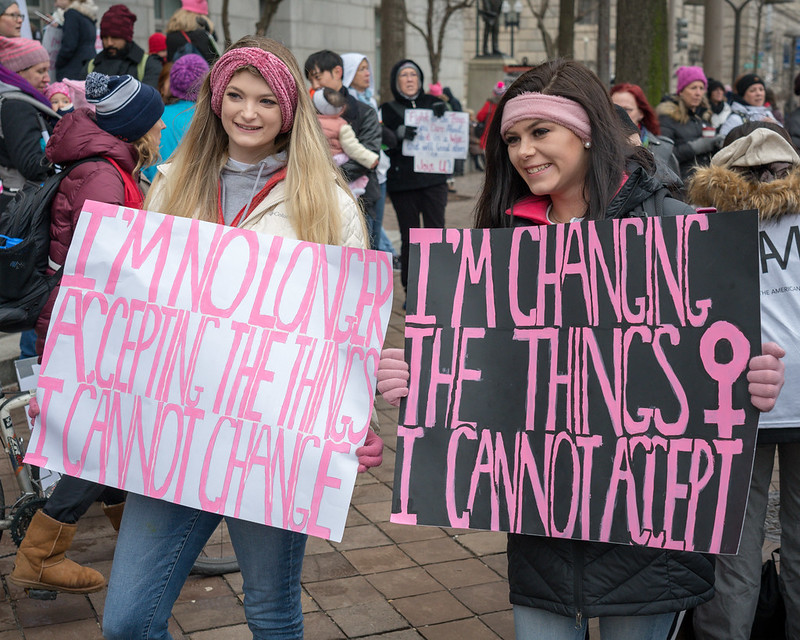
There is a pervasive narrative “that women are running for office in record numbers,” says Erin Loos Cutraro. “People hold onto that. They think it’s still true today.”
Except it’s not.
As the founder and CEO of political engagement nonprofit She Should Run, she should know. Loos Cutraro’s organization recently published a study, “The State of Women,” finding that 2018’s much-publicized “Year of the Woman” – when a record-breaking 103 women were elected to the U.S. House of Representatives – was an anomaly. “We haven’t seen that type of momentum for women’s representation since,” Loos Cutraro stated in a release of the study’s findings.
Representation for women in political office has long been lacking. Per the Center for American Women and Politics, women presently occupy 25% of the U.S. Senate’s 100 seats, and roughly 29% of seats in the U.S. House. They hold about 31% of state-level executive roles, and 24% of governorships. The majority of them, in all instances, are white.
So, parity is still a ways off – but women aren’t running to bridge the gap like they used to. In 2020, 29% of U.S. House candidates and just shy of 24% of U.S. Senate candidates were women. By 2022, those percentages dropped to 28% and 21.7%, respectively.
What’s happening? Following the election of former President Donald Trump in 2016, She Should Run saw a huge spike in interest, Loos Cutraro told The Story Exchange. “Think of it as a shaking of the trees – the apples that fell were people who had some inkling of interest [in running for office]. The energy and momentum around stepping forward was incredible.”
In 2018, that progress continued apace. But then, the pandemic hit in 2020. And “as time has gone on … people are faced with competing crises. Things got longer and harder. We started to see, in all of our programs, this exhaustion that existed – that exists – that didn’t before.”
Studies back that up, too. About 53% of women report elevated stress levels and diminishing work/life balance in a Covid world – to the point of impacting their mental health and sparking a “burnout epidemic.” Women are also drained in their personal lives, after giving disproportionately when it comes to household, childcare and emotional labor.
Loos Cutraro concluded: “Women just don’t have the minutes. Before, we would ask about their [myriad] challenges. Now, it’s just the exhaustion.”
Turning It Around
The irony is that electing more women to public office would likely address part of the problem.
Social safety nets such as universal paid leave and childcare, if sanctioned and funded through policy proposals, would mitigate the overextension that’s cutting women off from their political and personal aspirations. And studies do suggest that having more women in office results in the consideration, if not passage, of laws and programs that support families.
Moreover, “we can’t expect to have the smartest policies if we’re not tapping the full talent pool this country has to offer – and there is so much untapped talent,” Loos Cutraro notes. “We could … serve the full population if we had women in those rooms, in all ways.”
But in order to get women in there, change has to start with recruitment methodologies, she adds. “The messages we had been using assumed that women were already primed and interested in running” – strategies that largely focused on informing the public about the dearth of women representing us in office, and the need for change.
However, “the women … who are not encouraged by peers or family or their network [to run] – they hear a message of underrepresentation and it only solidifies something they already felt: This is not a space for women’s voices.”
There are other deterrents as well. One study from the University of Virginia found that women are, in general, more likely to be discouraged by the loss of privacy and family time while running for office, and less likely to regard themselves as qualified to run in the first place. Research from Harvard University revealed similar reluctance among women subjects.
And that’s before the new and unprecedented levels of exhaustion are factored in.
She Should Run now proposes a four-pronged approach to galvanizing women back into action. It calls for normalizing the concept of women running for office by sharing their stories more, improving access to vital resources, and retooling messaging to make other women’s existing campaigns feel relatable – as well as inspiring. This roadmap, she says – in tandem with more traditional methods – has the potential to right the ship.
Despite the journey ahead, Loos Cutraro isn’t losing heart. “The work is harder, but we still see women stepping up – being incredibly strong and amazing problem solvers,” she says. “In them, I know we’ll find our way forward.” ◼



